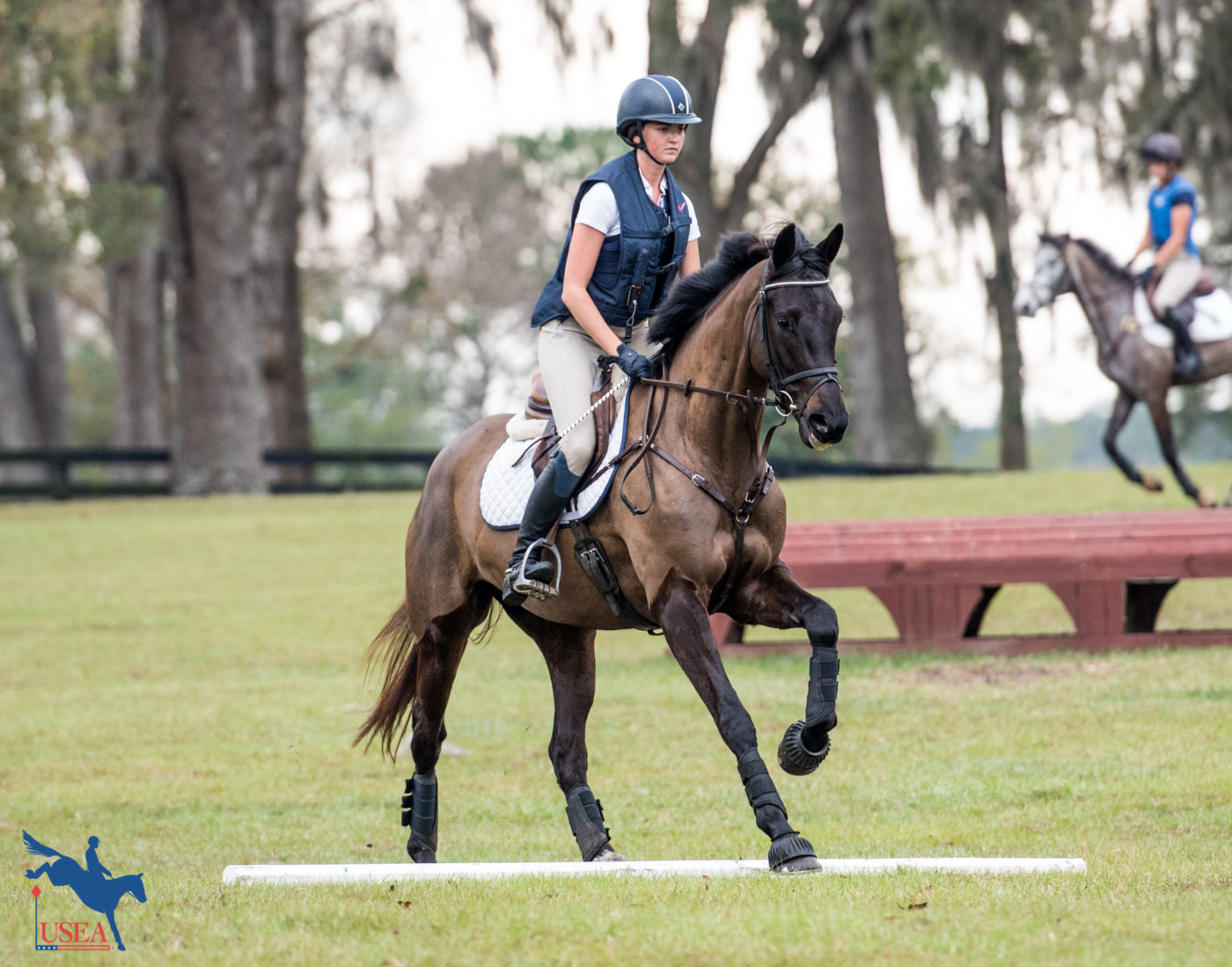Renew Your USEA Membership for the 2023 Season Today LEARN MORE

The Young and Future Event Horse article series is being provided through a partnership between Mythic Landing Enterprises, LLC. and the USEA.
Flatwork with young horses can at times become monotonous while riders spend a lot of time honing in on the basics and building correct muscle. It’s important to make sure your young horse looks forward to dressage days, and with some fun exercises you can easily make that happen at home on your own.
Truppner likes to be creative with the exercises she chooses and for this particular one you can even start on the ground. To set up this exercise, you’ll set up four trot poles on a 20-meter circle, set 4’ apart. You may need to adjust that distance based on your horse’s stride so just make sure they’re comfortable with the distance the first few times. Young horses need to learn how to use all four feet, and with most young horses beginning their training, they don’t realize that their hind legs are even attached to them. Doing a lot of transitions and learning how to effectively half-halt helps this process, which is the premise of this fun exercise!

A diagram of the exercise.
To begin, have your horse on the lunge line and have them simply walk through the poles. Once they go over them successfully through a few times, go ahead and have your horse trot through the poles a few times as well. After they’re warmed-up, it’s time to start throwing in some transitions. To begin, keep it simple. Have your horse trot through the poles, and once they’ve gone over the last one, have them pick up the canter for a few strides before transitioning back into the trot to once again trot through the poles.
Truppner notes, “This is a super fun exercise to watch your horse do. A lot of times, my horses pick up on the exercise and pick up the canter before I even cue them after poles. It’s like they’re saying, I got this! What’s next?!”
For horses that become proficient with this exercise, you can start to increase the difficulty. Have your horse start to do transitions within the poles. Ask your horse to trot in, then go down to the walk, and then pick up the trot before they leave the set of poles. This idea helps the horse learn to not brace its back or clench their teeth through the transitions. They need to stay agile while they’re doing two things at once.
You can also adjust this exercise further by adding even more poles to either side. This will require the transitions to be even more prompt and the horse to use their hind end effectively.
Once you’re confident with how your horse is performing through this exercise on the lunge line, give it a try in the saddle. Be sure to start the exact same way and only increase difficulty when your horse is ready. Truppner finds that when riders are doing this exercise on their horse that coming back down to the trot from the canter is the most difficult.
“I see a lot of horses bracing against their rider when asked to come back down to the trot. Be careful not to micromanage if you feel your horse tune you out or become unbalanced. This exercise is great because it forces the horse to figure it out on their own. Be sure to not disrupt the flow of the exercise, if they come to the poles still in the canter, let them solve the question on their own. Next time through they’ll pay more attention,” Truppner explains.
Truppner also makes sure to point out to not worry about leads while doing this exercise. Focus on the balance and everything will work itself out quickly. You’re not looking for incredible obedience in the beginning. It will come as your horse gets more confident and proficient with the exercise. Be patient and work through this weekly. Not everything has to be perfect the first time your try this!
About Meghan Truppner
Meghan Truppner is a highly sought-out dressage trainer and instructor based in the heart of Area II who successfully rides and competes in pure dressage through the Prix St. Georges level and has a diverse client base made up of dedicated dressage and event riders. Her abundant enthusiasm and positive way of teaching makes her enormously popular among her students, which has brought much success to her riders bringing up young horses under her guidance.
To learn more about Meghan and her program, please visit her Facebook page.